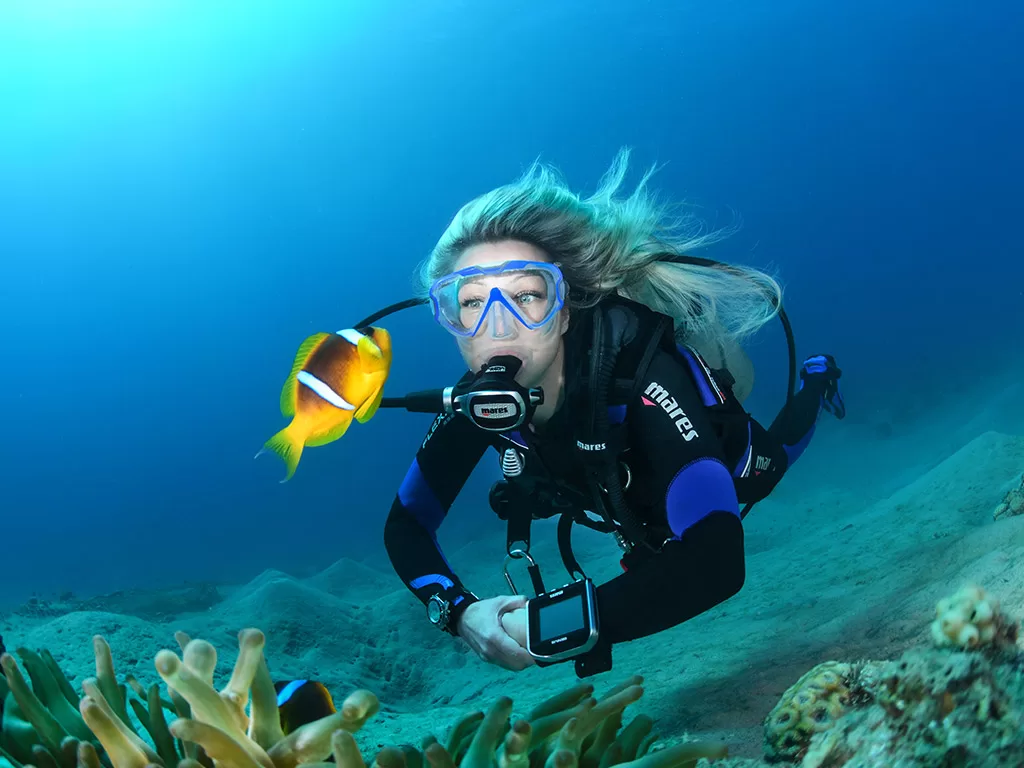
When you first start scuba diving, buoyancy control can seem a little daunting. You may watch your instructor effortlessly hover over the water and wonder if it involves some sort of magic potion they had to give you when you went through specialized training. But with these five simple tips and a little practice, you too can achieve perfect buoyancy. Are you ready?
What are the benefits of having good buoyancy control?
There are a number of reasons why it's important to stay well buoyant while scuba diving (and not just because you look cool in underwater photos!). Here are the top reasons:
Good buoyancy control prevents you from kicking up sand and silt, which can affect your visibility and that of other divers. What's the point of diving if you can't see anything?
- It also helps protect marine life and habitats because you won't be kicking or paddling like crazy, which can easily lead to coral breakage.
- For the same reason, it also protects you from sharp coral, toxic fish or dangerous marine debris.
- Having good buoyancy control will help you save air because you will be more relaxed, use less energy and not be out of breath.
- Poor buoyancy control can lead to rapid ascent or descent, which can be very dangerous. Diving too deep puts you at risk of losing your dive set, becoming "anesthetized" (from nitrogen anesthesia), or exceeding your safe bottom time. Ascending too fast puts you at risk of decompression sickness, lung hyperextension injury or hitting a boat on the surface.
Did you know that good buoyancy is a key skill for underwater photography?
So now you know why perfecting your buoyancy is good for you. Let's see how.
1. Buoyancy check
You'll learn how to perform a buoyancy check during your Open Water Diver course. But here's a quick reminder: first of all, you can make a rough guess as to how much weight you need to gain to dive. A general guide is about ten percent of your body weight, but this can't be relied upon as everyone is different. Then, with all equipment turned on, start at the surface (full BCD), put the regulator in your mouth (normal breathing) and then you can fully deflate the BCD. if your weight is correct, even if the BCD is empty, and you take a deep breath in, you should be floating. Exhale deeply and you should be submerged. If you drop down before you exhale, you are overweight, and if you stay afloat, you are underweight. Slowly adjust and add/remove some weights until you have completed the exercise.
Always perform a buoyancy check in a new location, on different water, with new equipment (especially a cold suit), with a different size cylinder or one made of a different material, and if you gain or lose weight. Ensure that the buoyancy check is carried out in calm and safe waters.
2. Adjust a little at a time
This is a mistake that many beginners make. They try to add air to the BCD to get neutral buoyancy, but they don't realize that there is a slight delay between adding air and rising (important). Avoid adding too much air at once. Add air for short periods at a time until you feel neutrally buoyant in the water. The same goes for letting the air out, a little at a time, otherwise you're likely to sink like a stone. When letting air out of the BCD, always make sure to hold the valve high above your head and in an upright body position to make it easier to let the air out.
3. Attend the SSI Perfect Buoyancy Specialty Course
If you really want to become a perfect buoyancy expert, the best way to do that is to take a Perfect Buoyancy Specialty Course. In this course, you will learn in-depth tips and tricks to achieve perfect buoyancy and practice buoyancy drills over and over again. Often involving fun underwater games, the Perfect Buoyancy Specialty is one of the most fun and rewarding courses you can do.
4. Find the right weight system for you
Did you know that there is more than one weight system to choose from? What works for one person may not work for others. It's best to try a weight system so you can feel comfortable underwater. Here is a quick overview of the two main options:
- Weight Belt: It may be that you were/will be taking your Open Water Diver course. A weight belt does exactly what it says on the tin; it is worn around the waist as a belt and weights are attached by sliding or adding them to the pockets of the belt. The weight belt allows you to distribute your weight evenly around your body.
- Built-in Integrated Weights: If you decide to buy your own BCD, you can choose one with built-in integrated weights. some BCDs come with pockets that can be slid in and out from the side and secured in place with buckles or clips. Integrated weights make it easy to maintain a horizontal diving position and are easily removable to adjust the weight in the water.
Want to take your diving to the next level? Check out our SSI Perfect Buoyancy Specialty Course and you'll master the art of buoyancy control.
5. Try to relax
As your time in scuba diving increases, but when you finally know what you are doing underwater and are confident in your abilities, you can dive easily and breathe easily. Relaxation allows for slower, more controlled breathing, which is better for buoyancy control.
It is good to practice breathing and meditation in your free time to become calmer and less anxious. Then, you can take it to the water and realize Zen through scuba diving.
Now you know what to do to get completely neutral buoyancy while scuba diving.
